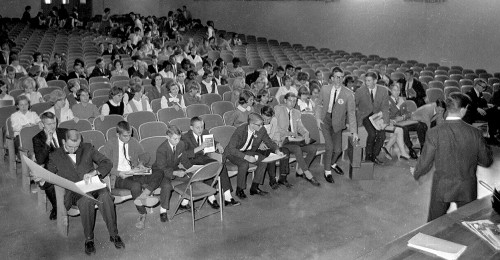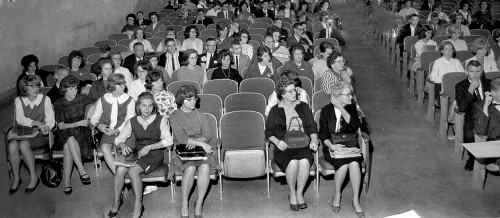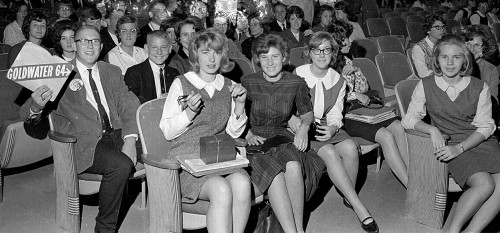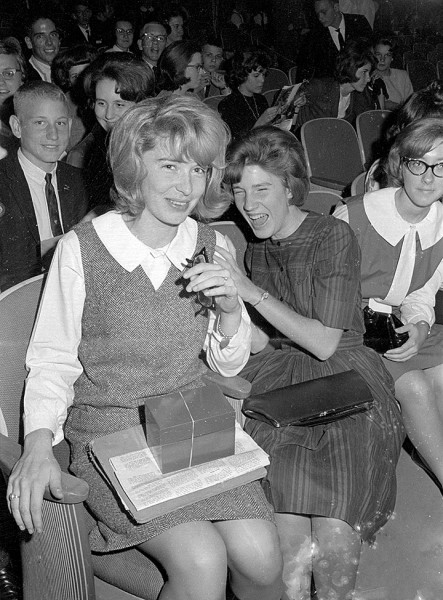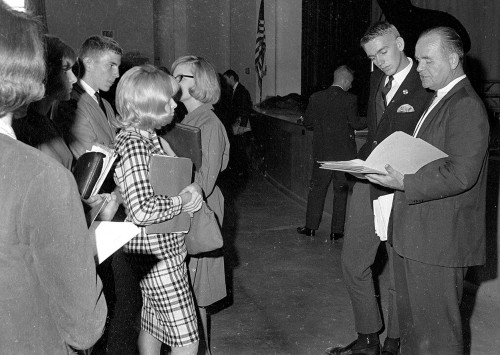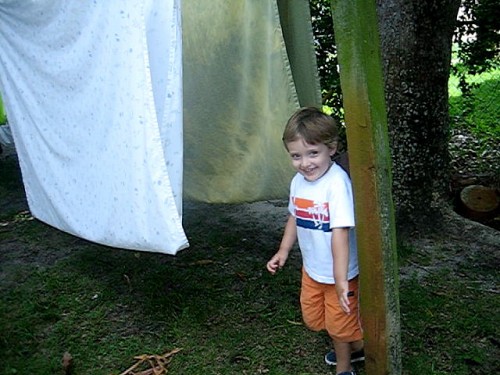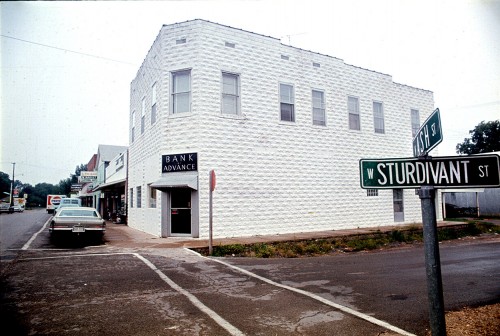 I love it when a story gets more interesting than anticipated. I found a photo of the Bank of Advance from around 1973, before a fire turned the two-story building into a single-story one. I figured I’d locate a recent photo, throw in a few dates, then go to bed.
I love it when a story gets more interesting than anticipated. I found a photo of the Bank of Advance from around 1973, before a fire turned the two-story building into a single-story one. I figured I’d locate a recent photo, throw in a few dates, then go to bed.
Ruth Millington, writing in Advance, Missouri, A Look at the First Hundred Years, gave me the easy stuff: the bank was chartered January 30, 1902. It’s first home was in a small frame building that later became Moore’s Feed and Seed Store. It moved from there into a small brick building which is the present site of Morgan Funeral Home.
Building erected in 1906
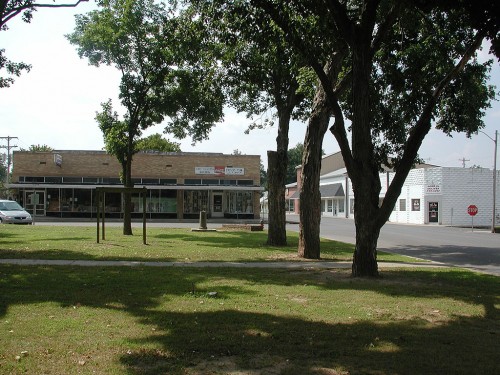 This photo shows the Prather Building, which housed my grandfather’s liquor store. The former bank building on the right was built in 1906 by Lon Goodman, postmaster at the time. The bank was located there until it moved in 1972.
This photo shows the Prather Building, which housed my grandfather’s liquor store. The former bank building on the right was built in 1906 by Lon Goodman, postmaster at the time. The bank was located there until it moved in 1972.
Defective wiring caused fire
The Nov. 7, 1982 Bulletin-Journal carried a photo and a story about the fire at the former bank building. Firemen from six departments managed to contain the fire to the roof, attic and second floor of the building. “Many businesses closed their doors to allow their workers to assist firemen, or employees trying to remove property from Connie’s Hair Hut and Advance Realty, located in the burning building, and the Clothes Hanger, located near the bank building, after it was feared the fire might spread.”
Advance Fire Chief George Green said the fire was probably caused by defective wiring in the attic. In addition to the two businesses on the ground floor, there were two occupied apartments on the second floor. The building was owned by Ruth Millington, chairman of the board of the Bank of Advance.
Bank was robbed twice
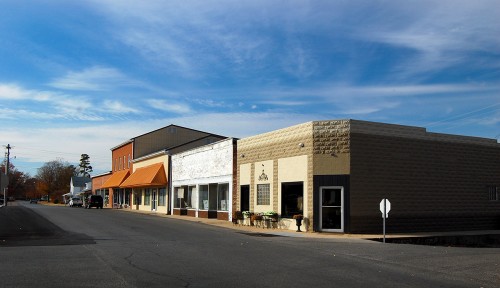 Millington wrote that the bank was robbed twice: the first was May 27, 1959, when three men made off with about $18,000. They were quickly apprehended. On Oct. 15, 1962, a lone bandit made off with about $9,000. He was arrested about a year later. HE’S the one who caught my eye.
Millington wrote that the bank was robbed twice: the first was May 27, 1959, when three men made off with about $18,000. They were quickly apprehended. On Oct. 15, 1962, a lone bandit made off with about $9,000. He was arrested about a year later. HE’S the one who caught my eye.
When Claudine Lorch retired from the bank after 35 years, she said she had been present for both bank robberies. “Once,” she said, “was quite enough.”
This photo was taken Nov. 15, 2010.
Second robbery was most interesting
The Missourian’s August 26, 1963, front page carried three stories about Richard B. Partridge, later convicted of robbing banks in Advance and Chaffee. He was the 38-year-old Jackson high school music director and director of the Jackson Municipal band. What was left of the loot was recovered from a strongbox in his high school locker.
An interview with Partridge said he picked the two banks because he thought they would be easy targets and because they were close enough to home that he would be gone by the time police could set up dragnets. He scouted the banks a couple of days before the robbery, then forced the employees into the bank’s vault while brandishing an unloaded gun. He left it unloaded because he didn’t want to take a chance on shooting anyone by accident, he said. He closed the vault doors, but didn’t lock the employees in the safe.
They weren’t music lovers
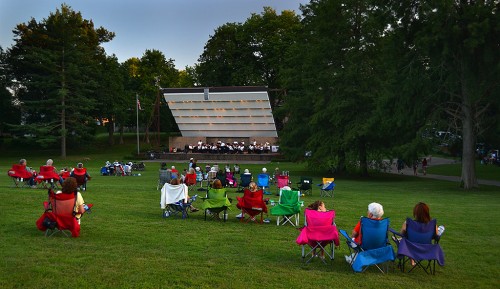 I loved the paper’s account of his capture. Partridge said the the first inkling he had that he might be suspected of the crimes was Thursday night while the Jackson Municipal Band concert was in progress. He turned to face the audience between numbers and saw John Crites, Cape County sheriff, State Trooper Robert Mouser and State Trooper Sgt. Glenn Lampley as well as a number of strange people in the audience.
I loved the paper’s account of his capture. Partridge said the the first inkling he had that he might be suspected of the crimes was Thursday night while the Jackson Municipal Band concert was in progress. He turned to face the audience between numbers and saw John Crites, Cape County sheriff, State Trooper Robert Mouser and State Trooper Sgt. Glenn Lampley as well as a number of strange people in the audience.
Partridge said he did not believe Sheriff Crites or Troopers Mouser and Lampley were music lovers and could not recall seeing the strangers at previous band concerts.
He said when the concert was over and the three officers did not leave, he was sure they had connected him with the robberies. He was arrested in minutes.
[Editor’s note: this Jackson band concert photo was taken in 2013. So far as I know, nobody in the photograph is guilty of bank robbery.]
Sentenced to 12 years in federal pen
A Missourian story on Jan. 7, 1964, said Partridge was being taken to Terre Haute, Ind., to begin serving two concurrent 12-year sentence for the two bank robberies. He would be eligible for parole in four years. Richard FitzGibbon, Jr., U.S. attorney, said Terre Haute was “not as tough as Levenworth or Atlanta,” and one at which many income tax evaders serve their sentences. The government attorney said the prison has a band and thought it probable that Partridge’s musical background will admit him to prison routine adequately. [That’s certainly a confusing sentence, even though I gather what the attorney was trying to say.]
Band celebrated 75th anniversary in 1995
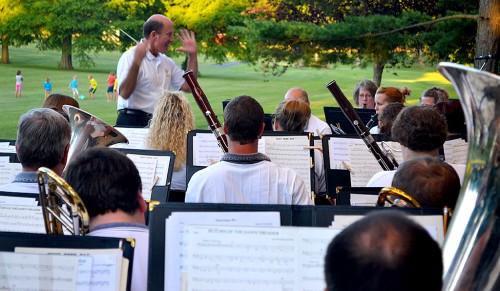 A story on the Jackson Municipal Band celebrating its 75th anniversary provided some other tidbits:
A story on the Jackson Municipal Band celebrating its 75th anniversary provided some other tidbits:
- Leroy McNeely joined the band in 1924, at age 15, and was a member of the band for 65 years. After the band played the National Anthem, McNeely was sitting a few feet away with his clarinet when they arrested his band leader.
- The “strangers” in the crowd were likely bank employees who were brought in to ID the robber.
- After Partridge served his sentence, he returned to Jackson, where he worked for Lenco, Inc. He died in 1989.
[Editor’s note: these folks have no connection to the bank robbery, either.]
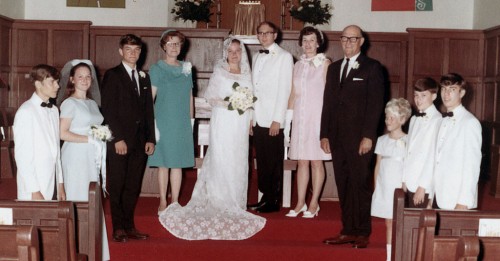 “I had a post all ready to go when I checked my Facebook messages. Son Adam had tagged Wife Lila and me: “Happy anniversary you crazy kids.”
“I had a post all ready to go when I checked my Facebook messages. Son Adam had tagged Wife Lila and me: “Happy anniversary you crazy kids.”





